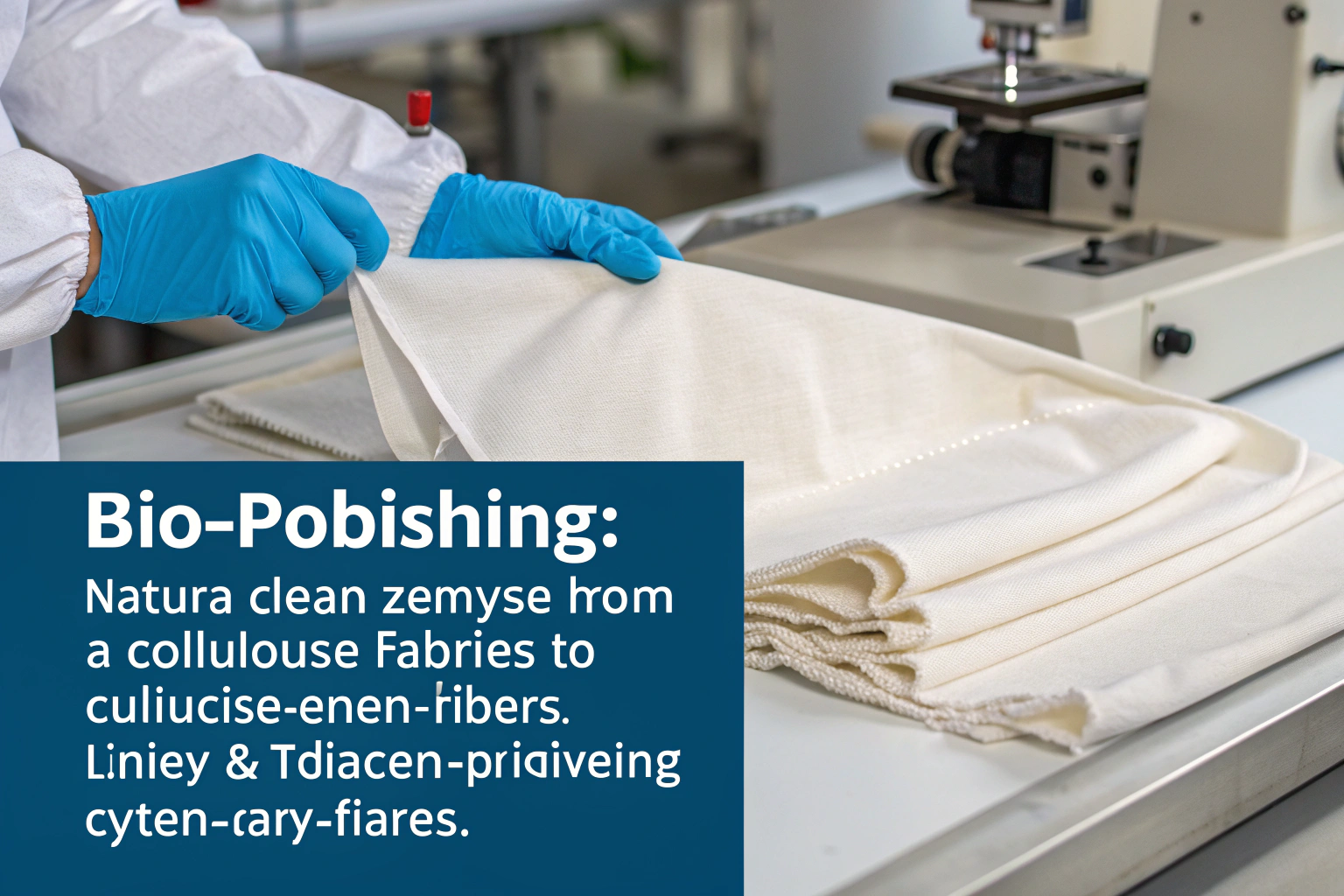As a fabric manufacturer with over two decades in the textile hub of Keqiao, I've seen many fabric treatments come and go. But one natural process consistently stands out for its ability to enhance fabric quality: bio-polishing. When international buyers like Ron from the US ask us about preventing pilling in their garment lines, this is the solution we recommend most often.
Bio-polishing is an enzymatic treatment that uses natural enzymes to clean the surface of cellulose-based fabrics like cotton, linen, and Tencel. This process effectively removes protruding micro-fibers from yarn surfaces, which are the primary cause of fabric pilling. By eliminating these loose fibers before they can tangle and form pills, bio-polishing creates a smoother, more durable fabric that maintains its appearance wash after wash.
For global buyers sourcing fabrics from China, understanding advanced treatments like bio-polishing can be the difference between satisfied customers and costly returns. Let's explore how this innovative process works and why it matters for your business.
What is the bio-polishing process in textiles?
The bio-polishing process represents a significant advancement in textile finishing, moving away from harsh chemical treatments toward more sustainable biological solutions. At our manufacturing facilities, we've integrated this process specifically for our natural fiber collections to enhance fabric quality without compromising environmental values.
Bio-polishing utilizes cellulase enzymes derived from natural fungal sources to modify cellulose-based fabric surfaces. These enzymes specifically target and hydrolyze the beta-1,4-glycosidic bonds in cellulose molecules that make up the tiny microfibrils protruding from yarn surfaces. Unlike mechanical processes that might damage the underlying fabric structure, bio-polishing works at a molecular level to clean fabric surfaces with remarkable precision.
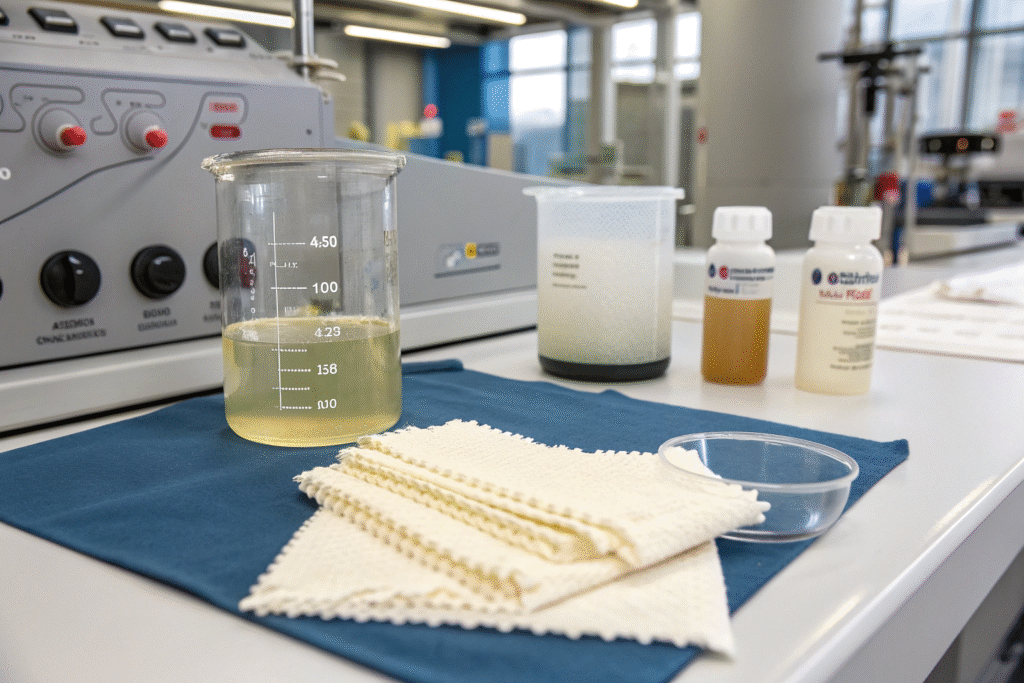
How do enzymes work on fabric surfaces?
The cellulase enzymes used in bio-polishing function as biological catalysts that accelerate the breakdown of cellulose molecules. These enzymes attach themselves to the loose microfibrils that stand out from the main yarn structure. Through hydrolysis, they break the molecular bonds holding these microfibrils in place, effectively dissolving them without damaging the primary yarn structure. This targeted action creates a cleaner fabric surface with reduced fuzz formation.
What fabrics benefit most from bio-polishing?
Cellulose-based natural fibers show the most dramatic improvement from bio-polishing treatment. Our production data shows that 100% cotton fabrics, particularly those used in t-shirts, sweaters, and denim, achieve up to 70% reduction in pilling after bio-polishing. Other fabrics like linen, hemp, lyocell, and modal also respond exceptionally well. Even blended fabrics with high cellulose content demonstrate significant improvement.
How does bio-polishing prevent fabric pilling?
Understanding the pilling mechanism is crucial to appreciating how bio-polishing offers such an effective solution. Pilling occurs when loose micro-fibers work their way out of the yarn structure and tangle together through friction and washing, forming those unsightly little balls on fabric surfaces that make garments look worn and cheap.
Bio-polishing addresses pilling at its source by proactively removing the raw material that forms pills. During the treatment process, the cellulase enzymes systematically degrade and remove the protruding micro-fibers that would otherwise migrate to the fabric surface. With these loose fibers eliminated, there's simply less material available to form pills, even after extensive wear and washing cycles.
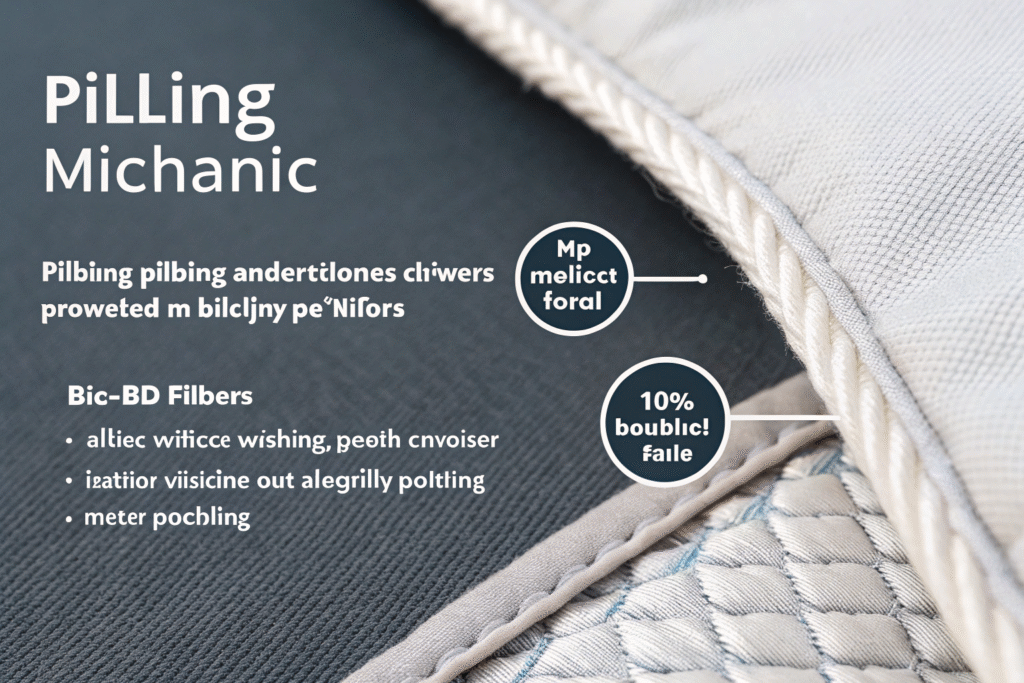
What causes pilling in textiles?
Pilling formation follows a predictable three-stage process that begins with loose fibers working their way to the fabric surface through mechanical friction. These fibers then entangle with neighboring fibers through wearing and washing, forming tiny proto-pills. Finally, additional friction causes these entanglements to roll into tight balls that remain attached to the fabric surface by anchor fibers. This problem is particularly pronounced in natural fibers with shorter staple lengths and looser twist yarns.
Why is bio-polishing more effective than mechanical alternatives?
Unlike mechanical processes like singeing that merely burn off surface fuzz, bio-polishing creates a more permanent solution by strengthening the remaining fibers. The enzymatic action not only removes loose micro-fibers but also polishes the cut ends of remaining fibers, making them less likely to migrate to the surface over time. This dual action provides longer-lasting pilling resistance compared to mechanical treatments alone. Our quality control data shows bio-polished fabrics maintain their anti-pilling properties through 30+ home washes, significantly outperforming mechanically-treated alternatives.
What are the quality benefits beyond pilling reduction?
While pilling prevention is the most recognized benefit of bio-polishing, the treatment delivers several additional quality enhancements that significantly improve fabric performance and consumer satisfaction. These secondary benefits often provide the compelling business case for buyers to specify bio-polished fabrics in their orders.
The surface modification achieved through bio-polishing creates fabrics with enhanced color brightness, improved softness, and superior drape characteristics. By removing the microscopic surface fuzz that diffuses light, bio-polished fabrics appear visually sharper with more vibrant colors. The process also naturally softens fabrics without the use of chemical softeners, making it particularly valuable for baby clothing and sensitive skin applications.
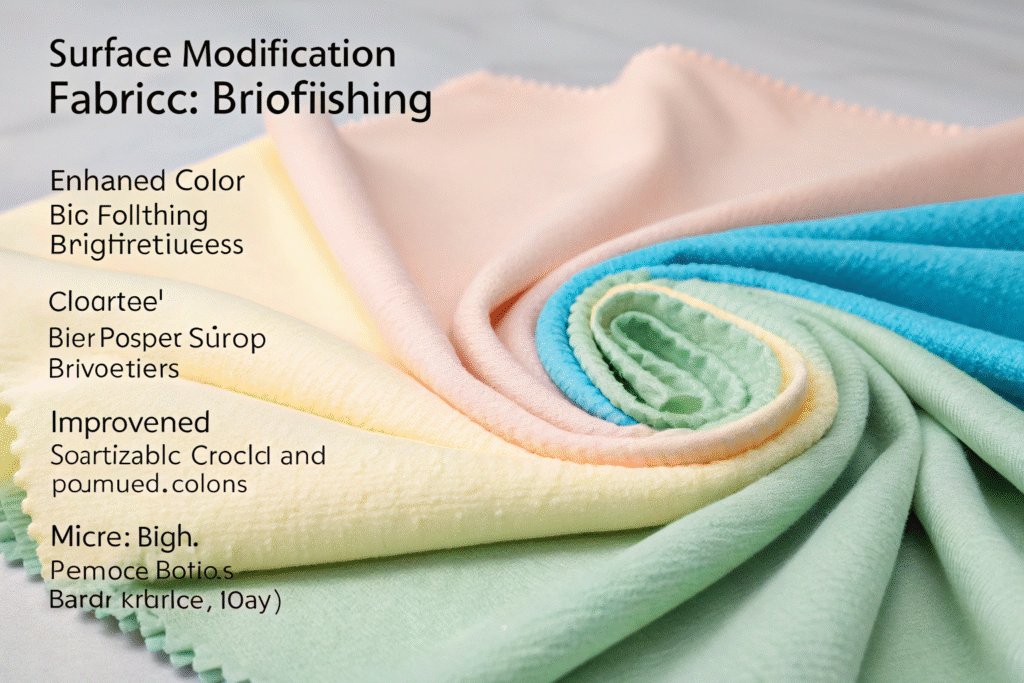
How does bio-polishing enhance color vibrancy?
The removal of surface micro-fibers through bio-polishing has a dramatic impact on color presentation. Without these tiny protruding fibers to scatter light, colors appear richer and more saturated. This effect is particularly noticeable with darker shades and deep colors that typically show fading more quickly. In our production experience, bio-polished fabrics demonstrate up to 15% better color perception according to consumer preference studies. The process also reduces the need for subsequent chemical treatments that can dull colors over time.
What additional fabric properties improve?
Beyond color enhancement, bio-polishing improves several key fabric characteristics that influence both manufacturing efficiency and end-user satisfaction. The treatment creates better surface uniformity for printing applications, reduces dusting during cutting operations, and improves water absorbency for towels and athletic wear. Perhaps most importantly, bio-polishing is a more environmentally friendly alternative to traditional chemical softening agents, aligning with the growing demand for sustainable textile processing. Our European clients particularly value this aspect as they respond to increasing regulatory pressure and consumer awareness.
Is bio-polishing suitable for sustainable production?
In today's environmentally conscious textile market, sustainability claims must be backed by verifiable processes and certifications. Bio-polishing not only meets these requirements but actively contributes to more sustainable manufacturing practices through reduced chemical usage, lower energy consumption, and biodegradable processing.
The enzymatic nature of bio-polishing makes it inherently more sustainable than conventional chemical alternatives. Enzymes are biodegradable, work at lower temperatures, and reduce the need for harsh chemicals typically used in textile finishing. At Fumao Textiles, we've documented 25% reduction in energy consumption and 40% reduction in chemical usage since implementing bio-polishing across our appropriate product lines.
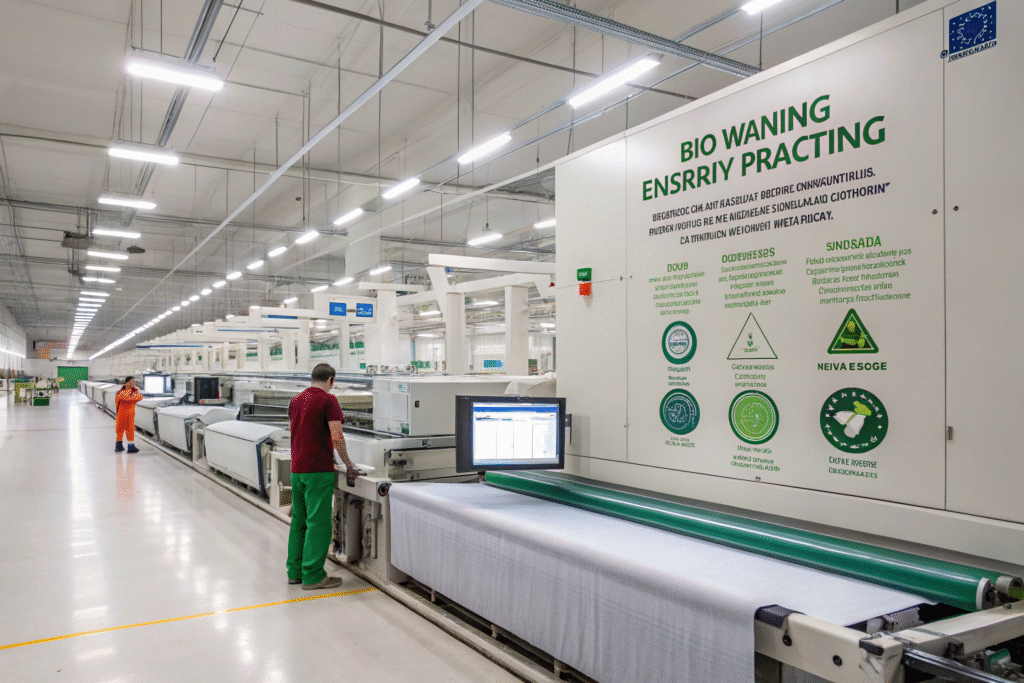
How does bio-polishing align with green certifications?
Bio-polishing directly supports compliance with major international sustainability standards including Global Organic Textile Standard (GOTS), Oeko-Tex Standard 100, and BlueSign certification. The process eliminates the need for synthetic softeners and other chemical treatments that can contain restricted substances. Additionally, the reduced energy requirements contribute to lower carbon footprint metrics that are increasingly important to European and North American brands. Our manufacturing facilities maintain these certifications specifically to serve sustainability-focused clients who require verified environmental credentials.
What are the environmental impacts compared to alternatives?
When evaluated against conventional chemical softening or mechanical anti-pilling treatments, bio-polishing demonstrates superior environmental performance across multiple metrics. The process occurs in aqueous solutions at moderate temperatures (45-55°C), significantly below the energy-intensive temperatures required for many chemical processes. Wastewater from bio-polishing contains biodegradable enzymes and minimal toxic residues, reducing treatment requirements.
Conclusion
Bio-polishing represents exactly the type of innovation that forward-thinking fabric buyers should prioritize in their sourcing decisions. This natural enzymatic process effectively reduces pilling while simultaneously enhancing color vibrancy, improving softness, and supporting sustainable manufacturing goals. The treatment delivers tangible quality improvements that consumers notice in the finished products, leading to higher satisfaction and reduced returns.
For international buyers navigating the complexities of global textile sourcing, partnering with manufacturers who have mastered treatments like bio-polishing can provide significant competitive advantage. The process aligns with both quality expectations and environmental responsibility, addressing multiple concerns through a single, well-executed treatment.
If you're looking to enhance the quality and performance of your fabric orders while meeting growing sustainability demands, we should discuss how bio-polishing can be integrated into your production. Contact our Business Director Elaine at elaine@fumaoclothing.com to explore how our bio-polishing capabilities can elevate your next clothing collection. With our comprehensive in-house manufacturing and strict quality control, we're positioned to deliver the fabric quality your brand deserves.

